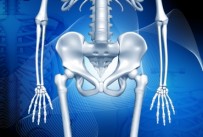Lower Crossed Syndrome

Lower Crossed Syndrome
Written By: Dr. Paul Kochoa, PT, DPT, OCS, CGFI
Sitting. We all do it. But sitting too long can cause problems. One of them is lower crossed syndrome. It’s analogous to the upper crossed syndrome that I mentioned in my previous post. Basically it’s an imbalance of tight and weak structures around the pelvis, hips, and lower back. This imbalance can cause pain and dysfunction and an over arching of the lower back.
Lower crossed syndrome is a combination of weak glutes, weak abdominals, tight hip flexors, and a tight lower back. This sets up a anterior tilt of the pelvis that puts excessive stress on the low back. Here’s the tilt:
Too much of this tilt creates a bad position for the pelvis and low back. It puts too much torque on the back and the imbalance of the muscles creates a poor environment to properly stabilize the core.
It can affect your standing posture and even affect your golf game. Here’s an example:
The golfer on the left is exhibiting what’s called an S-Posture. The golfer on the right is in a more neutral posture. Like the C-Posture (see my previous post The Body-Swing Relationship), the S-Posture can be detrimental to your back and golf swing. The increased curvature in the lower back causes the abdominal muscles to relax, deactivating the core muscles. The lack of core stability can cause a loss of posture or reverse spine angle during the back swing. With the core off, all that torque is transmitted straight to the back and then you know what means, PAIN.
To correct this problem, you basically have to stretch the tight structures and strengthen the weak ones; and then train the core to work. A physical therapist at Professional Physical Therapy and Training can help direct you on where to start.
One thing that you can try is bridging with leg extension. This exercise will strengthen the hips, glutes, and core. Here’s a video of Dr. Greg Rose from the Titleist Performance Institute performing the bridge with leg extension exercise:
The key with this exercise is to maintain the level hips when you extend one leg. With one leg kicking out, the pelvis wants to rotate and drop. Using your hip muscles, you have to contract strongly to control this rotation and stabilize your pelvis.
Try it out, wake up the “king” and “queen” (see my previous post: My Favorite Exercise).
Next up: Empty can vs. full can
If you would like more information, please call Professional Physical Therapy and Training at 973-270-7417. Our offices our located within the YMCA locations in Madison and Summit, NJ. You do not need to be a member of the YMCA to visit with us.
Image courtesy of stockimages / FreeDigitalPhotos.net